Five identical plates each of area a are joined as shown in the figure. The distance between the plates is d. the plates are connected to a potential difference of V volt. The charge on plates 1 and 4 will be

−ε0AVd.2ε0AVd
ε0AVd.2ε0AVd
ε0AVd.−2ε0AVd
−ε0AVd.−2ε0AVd
The correct Answer is:C
Topper's Solved these Questions
- ELECTROSTATIC POTENTIAL AND CAPACITORSBOOK - DC PANDEYCHAPTER - ELECTROSTATIC POTENTIAL AND CAPACITORSEXERCISE - (B) Chapter exercises
20 Videos
- ELECTROSTATIC POTENTIAL AND CAPACITORSBOOK - DC PANDEYCHAPTER - ELECTROSTATIC POTENTIAL AND CAPACITORSEXERCISE - (C) Chapter exercises
50 Videos
- ELECTROSTATIC POTENTIAL AND CAPACITORSBOOK - DC PANDEYCHAPTER - ELECTROSTATIC POTENTIAL AND CAPACITORSEXERCISE - Check point 2.5
20 Videos
- ELECTROMAGNETIC WAVESBOOK - DC PANDEYCHAPTER - ELECTROMAGNETIC WAVESEXERCISE - Sec C
22 Videos
- ELECTROSTATICSBOOK - DC PANDEYCHAPTER - ELECTROSTATICSEXERCISE - Medical entrances gallery
37 Videos
Similar Questions
Five identical capacitor paltes, each of area A, are arranged such that adjacent plates are at a distance d apart, the plates are connected to a source of emf V as shown in the figure
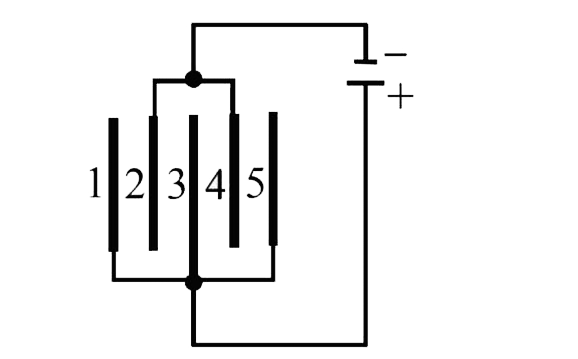
The charge on plate 1 is ………..and on plate 4 is.............
View SolutionFive identical capacitor paltes, each of area A, are arranged such that adjacent plates are at a distance d apart, the plates are connected to a source of emf V as shown in the figure

The charge on plate 1 is ………..and on plate 4 is.............
View Solution
Knowledge Check
Five identical plates each of area A are joined as shown in the figure. The distance between the plates is d. The plates are connected to a p.d. of V volts . The charges on plates 1 and 4 will be
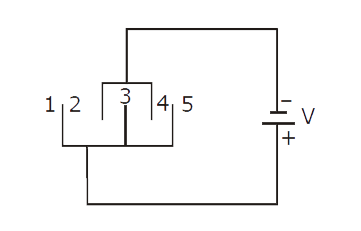 A∈0AVd,2∈0AVdB−∈0AVd,2∈0AVdC∈0AVd,−2∈0AVdD−∈0AVd,−2∈0AVd
A∈0AVd,2∈0AVdB−∈0AVd,2∈0AVdC∈0AVd,−2∈0AVdD−∈0AVd,−2∈0AVdThe distance between the plates of a parallel plate condenser is 4mm and potential difference is 60 volts. If the distance between the plates is increased to 12mm, then
AThe potential difference of the condenser will become 180 voltsBThe potential difference will become 20 voltsCThe potential difference will remain unchangedDThe charge on condenser will reduce to one third
Charges 2q and −3q are given to two identical metal plates of area of cross section A. the distance between the plates is d. Find the capacitance and potential difference between the plates.
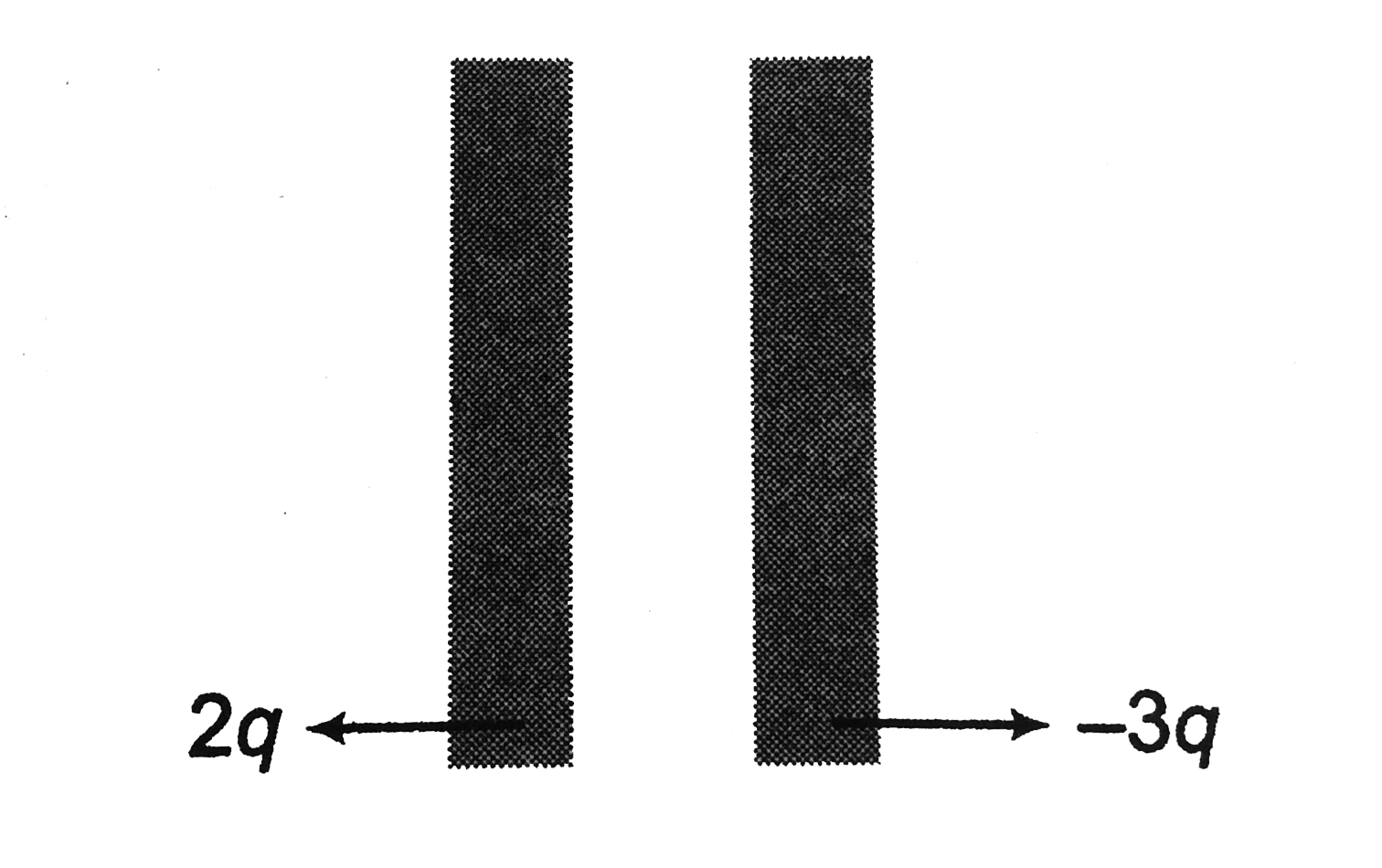
View SolutionCharges 2q and −3q are given to two identical metal plates of area of cross section A. the distance between the plates is d. Find the capacitance and potential difference between the plates.

View SolutionArea of each plate is A. The conducting plates are connected to a battery of emf V volts. Find charges q1 to qt.

View SolutionArea of each plate is A. The conducting plates are connected to a battery of emf V volts. Find charges q1 to qt.

View Solution(a) Find the potential difference between the plates of a parallel plate capacitor of capacitance 5μF if a charge +800μC is placed on one plate and-200μC on another plate.
(b) The charege given to plate are as shown. The capacitance between the adjacent plates is C. find the charge on outer surface of plate 3, and potential difference between plate 1 and 2.
(c) If A is area of each plate and d is separation between adjacent plates, find the charge supplied by battery.
(d) Five idential capacitor plates each of area A are arranged such that adjacent plates are at a distance d apart. the plates are connected to a source of emf V as shown. what is the magnitude and nature of charge on plates 1 and 3 respectively?
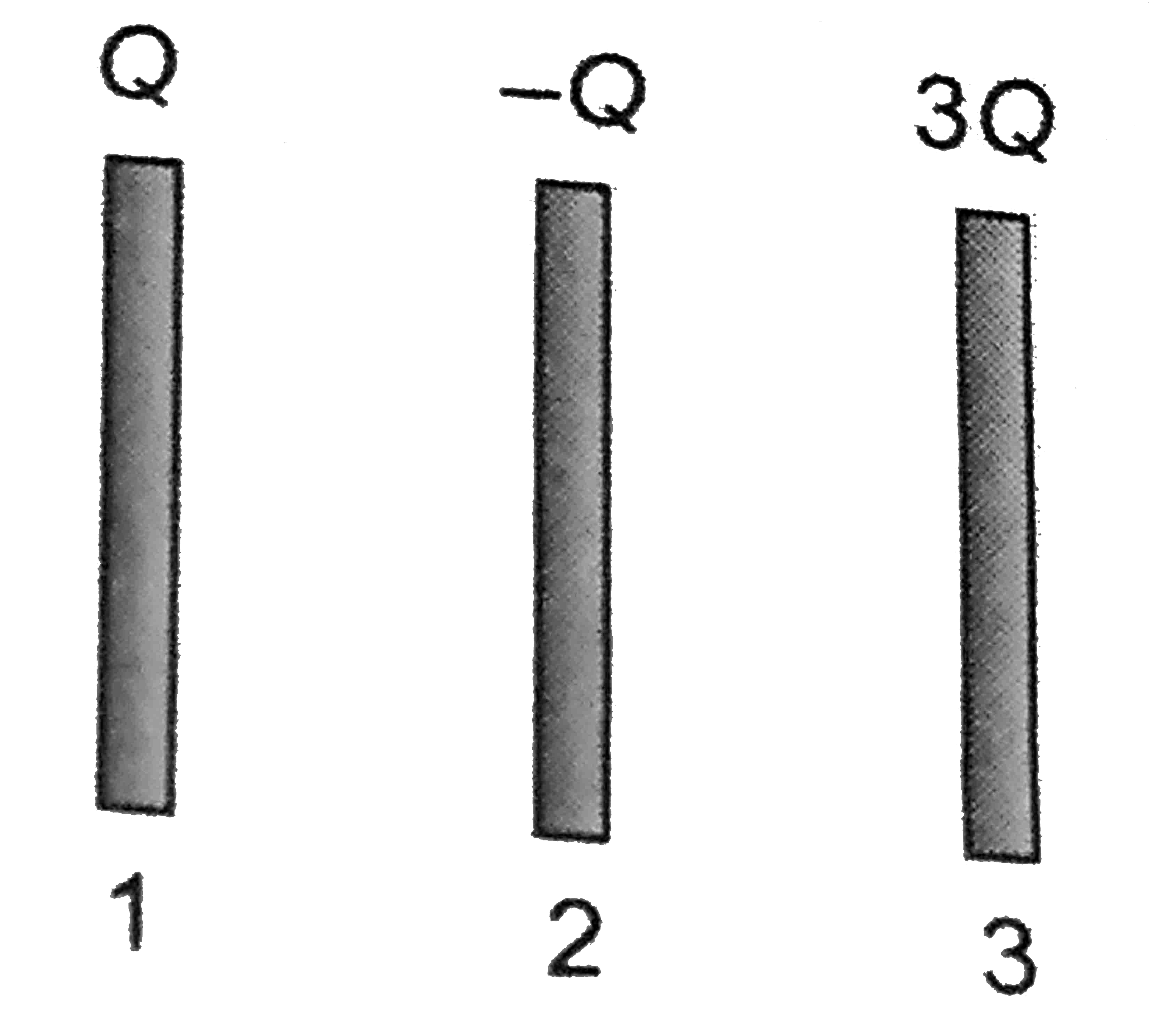
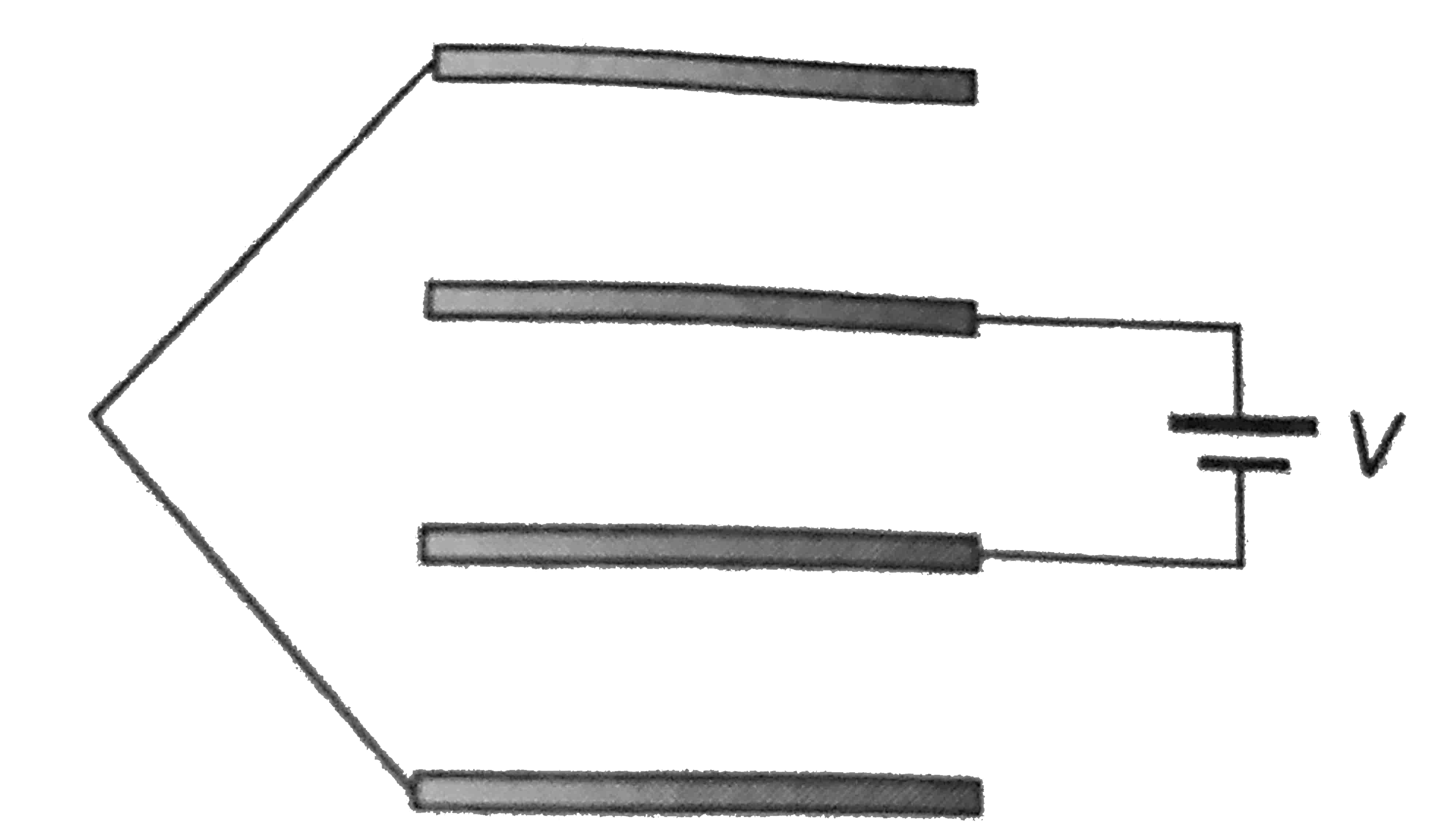
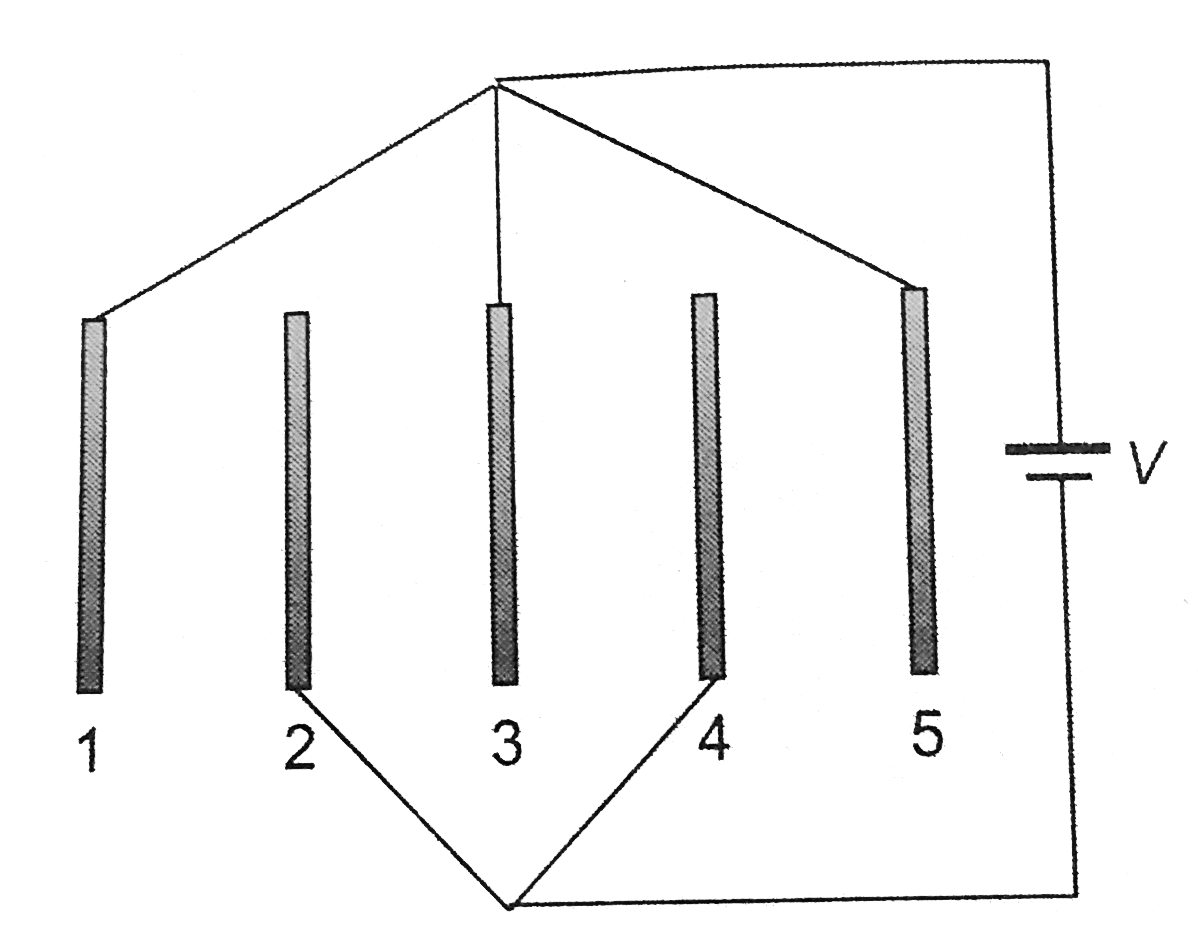
View SolutionFive identical conducting plates each of face area .A. are arranged as shown in figure. If a potential. difference of .V.0 is created between plate A and C then the charge on plate .E. will be [Given C=ε0Ad ]
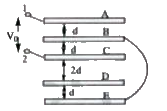
View Solution

